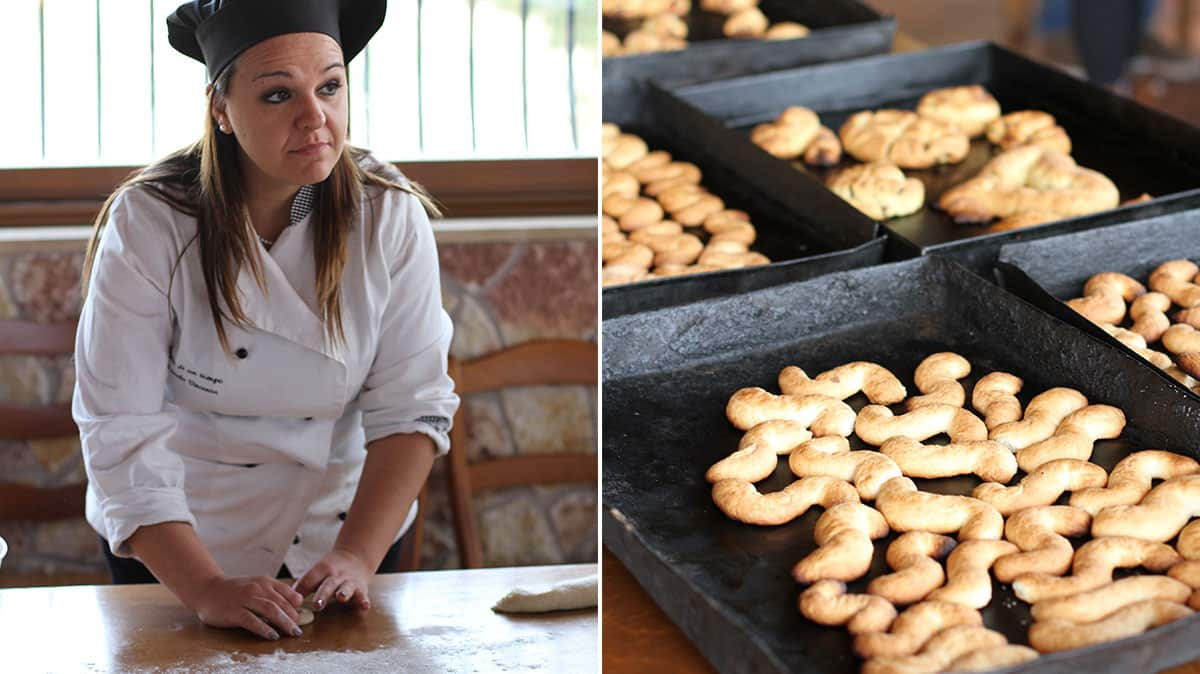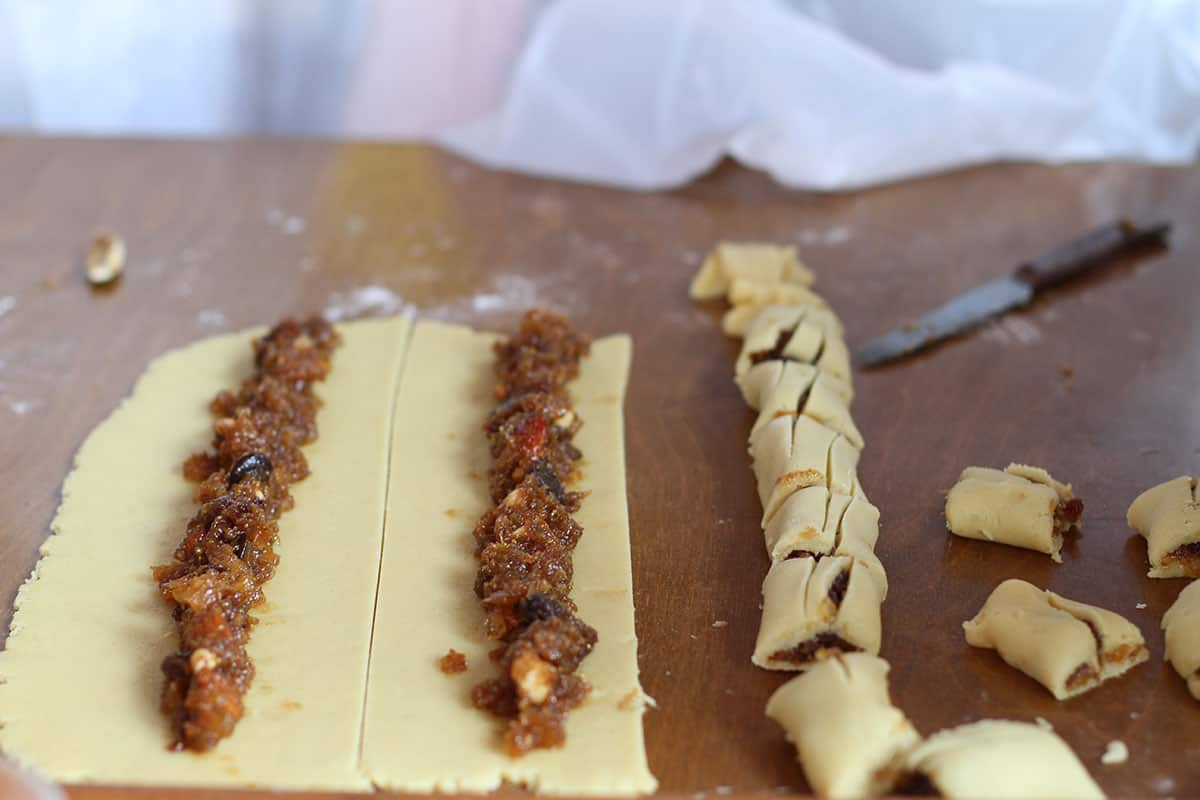Sicily has no shortage of sweet treats. From ricotta-filled and to vividly painted, lifelike frutta martorana (marzipan fruits), the breadth of traditional pastries on offer reflects the mix of cultures that established themselves on the Italian island over the centuries.
Add to that a busy calendar of Catholic celebrations throughout the year, where special confections are prepped to coincide with religious days and festivals. There are zeppole (fried doughnuts) served on St. Martin’s day on November 11 in the Syracuse region; the patron saint of Palermo, Saint Rosalia, is historically commemorated each July with the chilled watermelon pudding, gelo di melone; while cuddure, braided buns expertly shaped into baskets and birds enveloping a hard-boiled egg, appear during Easter.
“In Sicily, everything sweet has a strong correlation with religious life,” says Vincenza Scala, a pastry chef based in Monreale, just outside Palermo. Part of that is because, from the Middle Ages onward, nuns stationed in convents across Sicily were once charged with preparing sweets for noble families and members of the clergy. “In Italy during the 1500s, there were the monasteries of Benedictine nuns… they were living the life of the church, while also carrying on the tradition of sweets, so these two elements are really connected to each other.”

Source: Alecia Wood
The name of Scala’s bakery, , is a nod to one of her key missions – it translates to “the flavours of the past”. “We’re trying to re-establish the tradition of a really ancient sweet coming from the 16th Century, which is called monacale,” she says. The biscuits are palm-sized, oval-shaped mounds formed from a buttery shortbread that’s stuffed with a lemon-scented, sweetened green squash paste. “It’s a very holy cookie. The oval shape is related to sexual forms and female symbolism, so there’s a strong correlation between the holy dimension and the profane shape of the biscuit,” Scala explains.
It’s not the only dolce di convento that might have double meaning. Another historic biscuit Scala is reviving is the S di Monreale, an iced shortbread in the shape of an ‘s’ in reference to Saint Castrenze – Monreale’s patron saint – who’s commemorated each February 11. “It could also be an ‘s’ like a snake, which is related to sin, so probably the nuns were having fun trying to design a biscuit connected to religiosity, but at the same time finding a shape that was actually kind of controversial,” says Scala. “Even today, the consumption of that specific sweet is related to the 11th of February. If you want to determine the history of a certain sweet [in Sicily], you can do that in terms of the calendar, because that day has a specific culinary tradition.”
These type of nuanced, festival-edition Sicilian sweets can be hard to come by in mainland Italy. That’s especially so because their treats are a departure from those in other regions, displaying the hallmark ingredients and techniques of serial occupations on the island – the Spanish brought chocolate from the Americas, the Saracens carried over spices like cinnamon, while the Arabs brought nuts, dried fruits and shaved ice flavoured with fruit syrups, leaving behind modern-day granita.
“Buccellato has a Latin name but Arabic ingredients,” Scala says of the cookie she prepares for Christmastime in keeping with age-old custom. It’s stuffed with dried figs, dark chocolate, honey, cinnamon and hazelnuts. “The tradition of making sweets was dynamic, because with all the dominations that came here, people were adopting new techniques and innovating recipes. You can see the religious tradition as well as all the different historical influences within this one food.” Though buccellati can be found in other spots around Sicily with varying designs, in Monreale it’s traditionally made as a roll and cut into smaller pieces. “In the past, the more elaborate the biscuit was in terms of its shape, the higher the importance of the women [making it], who were able to show they were skilful pastry makers,” says Scala. Scala’s ability is evident – she flips and twists and braids the buccellati deftly, even as almost burst with dried fruit – but it’s her devotion to keeping these ancient pastries alive that makes them all the sweeter.
Though buccellati can be found in other spots around Sicily with varying designs, in Monreale it’s traditionally made as a roll and cut into smaller pieces. “In the past, the more elaborate the biscuit was in terms of its shape, the higher the importance of the women [making it], who were able to show they were skilful pastry makers,” says Scala. Scala’s ability is evident – she flips and twists and braids the buccellati deftly, even as almost burst with dried fruit – but it’s her devotion to keeping these ancient pastries alive that makes them all the sweeter.

Source: Alecia Wood
Discover different perspectives on faith and religion in Shaun Micallef's Stairway to Heaven (airs on SBS on Wednesdays at 8.30pm from 18 January 2017, then on ).





